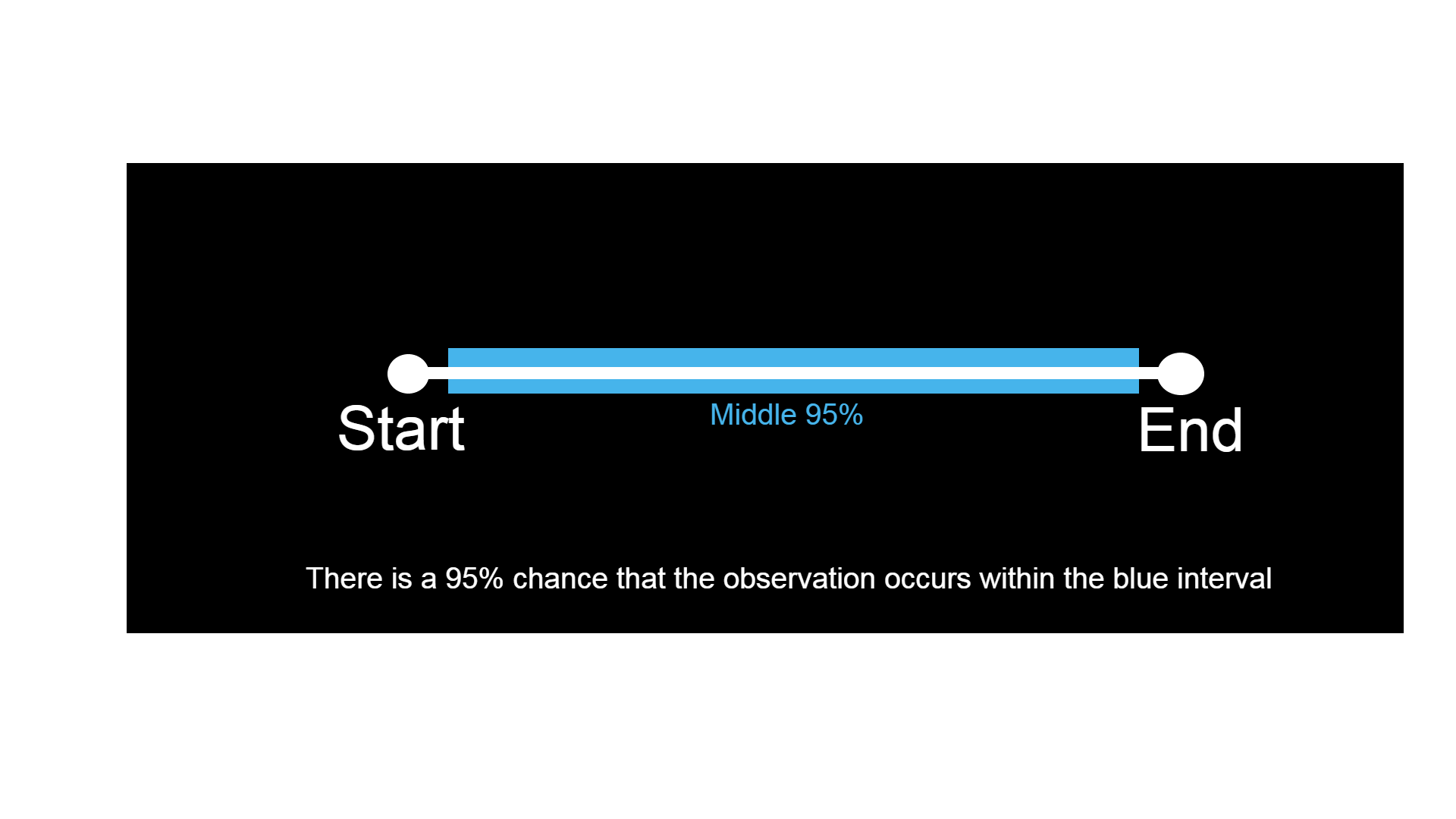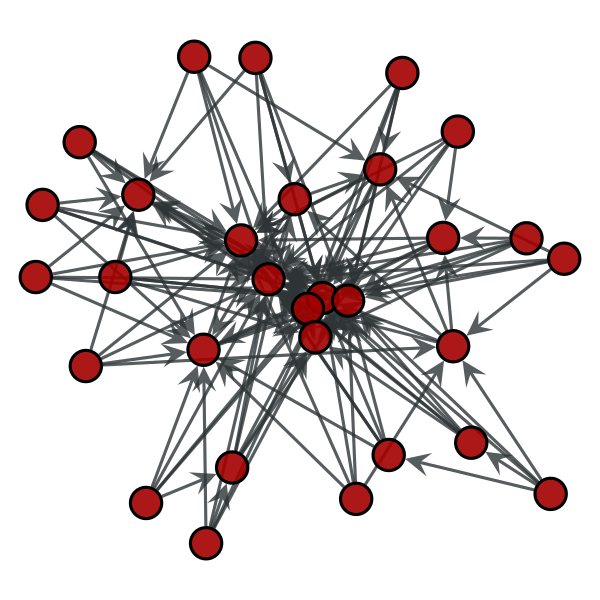|
Lindy Effect
The Lindy effect (also known as Lindy's Law) is a theorized phenomenon by which the future life expectancy of some non-perishable things, like a technology or an idea, is proportional to their current age. Thus, the Lindy effect proposes the longer a period something has survived to exist or be used in the present, the longer its remaining life expectancy. Longevity implies a resistance to change, obsolescence or competition and greater odds of continued existence into the future. Where the Lindy effect applies, mortality rate ''decreases'' with time. Mathematically, the Lindy effect corresponds to lifetimes following a Pareto probability distribution. The concept is named after Lindy's delicatessen in New York City, where the concept was informally theorized by comedians. The Lindy effect has subsequently been theorized by mathematicians and statisticians. Nassim Nicholas Taleb has expressed the Lindy effect in terms of "distance from an absorbing barrier." The Lindy effect a ... [...More Info...] [...Related Items...] OR: [Wikipedia] [Google] [Baidu] |
Mediocrity Principle
The mediocrity principle is the philosophical notion that "if an item is drawn at random from one of several sets or categories, it's more likely to come from the most numerous category than from any one of the less numerous categories". The principle has been taken to suggest that there is nothing very unusual about the evolution of the Solar System, Earth's history, the evolution of biological complexity, human evolution, or any one nation. It is a heuristic in the vein of the Copernican principle, and is sometimes used as a philosophical statement about the place of humanity. The idea is to assume mediocrity, rather than starting with the assumption that a phenomenon is special, privileged, exceptional, or even superior. Extraterrestrial life The mediocrity principle suggests, given the existence of life on Earth, that should life exist elsewhere in the universe, it will typically exist on Earth-like planets. Measurement of distance to stars The mediocrity principle was ... [...More Info...] [...Related Items...] OR: [Wikipedia] [Google] [Baidu] |
Random Variable
A random variable (also called random quantity, aleatory variable, or stochastic variable) is a mathematical formalization of a quantity or object which depends on random events. It is a mapping or a function from possible outcomes (e.g., the possible upper sides of a flipped coin such as heads H and tails T) in a sample space (e.g., the set \) to a measurable space, often the real numbers (e.g., \ in which 1 corresponding to H and -1 corresponding to T). Informally, randomness typically represents some fundamental element of chance, such as in the roll of a dice; it may also represent uncertainty, such as measurement error. However, the interpretation of probability is philosophically complicated, and even in specific cases is not always straightforward. The purely mathematical analysis of random variables is independent of such interpretational difficulties, and can be based upon a rigorous axiomatic setup. In the formal mathematical language of measure theory, a random ... [...More Info...] [...Related Items...] OR: [Wikipedia] [Google] [Baidu] |
Economics Effects
Economics () is the social science that studies the production, distribution, and consumption of goods and services. Economics focuses on the behaviour and interactions of economic agents and how economies work. Microeconomics analyzes what's viewed as basic elements in the economy, including individual agents and markets, their interactions, and the outcomes of interactions. Individual agents may include, for example, households, firms, buyers, and sellers. Macroeconomics analyzes the economy as a system where production, consumption, saving, and investment interact, and factors affecting it: employment of the resources of labour, capital, and land, currency inflation, economic growth, and public policies that have impact on these elements. Other broad distinctions within economics include those between positive economics, describing "what is", and normative economics, advocating "what ought to be"; between economic theory and applied economics; between rational and beh ... [...More Info...] [...Related Items...] OR: [Wikipedia] [Google] [Baidu] |
Weibull Distribution
In probability theory and statistics, the Weibull distribution is a continuous probability distribution. It is named after Swedish mathematician Waloddi Weibull, who described it in detail in 1951, although it was first identified by Maurice René Fréchet and first applied by to describe a particle size distribution. Definition Standard parameterization The probability density function of a Weibull random variable is : f(x;\lambda,k) = \begin \frac\left(\frac\right)^e^, & x\geq0 ,\\ 0, & x 0 is the ''shape parameter'' and λ > 0 is the ''scale parameter'' of the distribution. Its complementary cumulative distribution function is a stretched exponential function. The Weibull distribution is related to a number of other probability distributions; in particular, it interpolates between the exponential distribution (''k'' = 1) and the Rayleigh distribution (''k'' = 2 and \lambda = \sqrt\sigma ). If the quantity ''X'' is a "time-to-failure", the Weibull distribution gives a d ... [...More Info...] [...Related Items...] OR: [Wikipedia] [Google] [Baidu] |
Survivorship Bias
Survivorship bias or survival bias is the logical error of concentrating on entities that passed a selection process while overlooking those that did not. This can lead to incorrect conclusions because of incomplete data. Survivorship bias is a form of selection bias that can lead to overly optimistic beliefs because multiple failures are overlooked, such as when companies that no longer exist are excluded from analyses of financial performance. It can also lead to the false belief that the successes in a group have some special property, rather than just coincidence as in correlation "proves" causality. Another kind of survivorship bias would involve thinking that an incident was not all that dangerous because the only people who were involved in the incident who can speak about it are those who survived it. Even if one knew that some people are dead, they would not have their voice to add to the conversation, leading to bias in the conversation. As a general experimental ... [...More Info...] [...Related Items...] OR: [Wikipedia] [Google] [Baidu] |
Survivorship Curve
A survivorship curve is a graph showing the number or proportion of individuals surviving to each age for a given species or group (e.g. males or females). Survivorship curves can be constructed for a given cohort (a group of individuals of roughly the same age) based on a life table. There are three generalized types of survivorship curves: * ''Type I'' or convex curves are characterized by high age-specific survival probability in early and middle life, followed by a rapid decline in survival in later life. They are typical of species that produce few offspring but care for them well, including humans and many other large mammals. * ''Type II'' or diagonal curves are an intermediate between Types I and III, where roughly constant mortality rate/survival probability is experienced regardless of age. Some birds and some lizards follow this pattern. * ''Type III'' or concave curves have the greatest mortality (lowest age-specific survival) early in life, with relatively low rates of ... [...More Info...] [...Related Items...] OR: [Wikipedia] [Google] [Baidu] |
Preferential Attachment
A preferential attachment process is any of a class of processes in which some quantity, typically some form of wealth or credit, is distributed among a number of individuals or objects according to how much they already have, so that those who are already wealthy receive more than those who are not. "Preferential attachment" is only the most recent of many names that have been given to such processes. They are also referred to under the names Yule process, cumulative advantage, the rich get richer, and the Matthew effect. They are also related to Gibrat's law. The principal reason for scientific interest in preferential attachment is that it can, under suitable circumstances, generate power law distributions. If preferential attachment is non-linear, measured distributions may deviate from a power law. These mechanisms may generate distributions which are approximately power law over transient periods. Definition A preferential attachment process is a stochastic urn process ... [...More Info...] [...Related Items...] OR: [Wikipedia] [Google] [Baidu] |
Planning Fallacy
The planning fallacy is a phenomenon in which predictions about how much time will be needed to complete a future task display an optimism bias and underestimate the time needed. This phenomenon sometimes occurs regardless of the individual's knowledge that past tasks of a similar nature have taken longer to complete than generally planned. The bias affects predictions only about one's own tasks; when outside observers predict task completion times, they tend to exhibit a pessimistic bias, overestimating the time needed. The planning fallacy involves estimates of task completion times more optimistic than those encountered in similar projects in the past. The planning fallacy was first proposed by Daniel Kahneman and Amos Tversky in 1979. In 2003, Lovallo and Kahneman proposed an expanded definition as the tendency to underestimate the time, costs, and risks of future actions and at the same time overestimate the benefits of the same actions. According to this definition, the plann ... [...More Info...] [...Related Items...] OR: [Wikipedia] [Google] [Baidu] |
Ergodic Theory
Ergodic theory ( Greek: ' "work", ' "way") is a branch of mathematics that studies statistical properties of deterministic dynamical systems; it is the study of ergodicity. In this context, statistical properties means properties which are expressed through the behavior of time averages of various functions along trajectories of dynamical systems. The notion of deterministic dynamical systems assumes that the equations determining the dynamics do not contain any random perturbations, noise, etc. Thus, the statistics with which we are concerned are properties of the dynamics. Ergodic theory, like probability theory, is based on general notions of measure theory. Its initial development was motivated by problems of statistical physics. A central concern of ergodic theory is the behavior of a dynamical system when it is allowed to run for a long time. The first result in this direction is the Poincaré recurrence theorem, which claims that almost all points in any subset of the ... [...More Info...] [...Related Items...] OR: [Wikipedia] [Google] [Baidu] |
Memorylessness
In probability and statistics, memorylessness is a property of certain probability distributions. It usually refers to the cases when the distribution of a "waiting time" until a certain event does not depend on how much time has elapsed already. To model memoryless situations accurately, we must constantly 'forget' which state the system is in: the probabilities would not be influenced by the history of the process. Only two kinds of distributions are memoryless: geometric distributions of non-negative integers and the exponential distributions of non-negative real numbers. In the context of Markov processes, memorylessness refers to the Markov property, an even stronger assumption which implies that the properties of random variables related to the future depend only on relevant information about the current time, not on information from further in the past. The present article describes the use outside the Markov property. Waiting time examples With memory Most phenomena are ... [...More Info...] [...Related Items...] OR: [Wikipedia] [Google] [Baidu] |
Hazard Function
Failure rate is the frequency with which an engineered system or component fails, expressed in failures per unit of time. It is usually denoted by the Greek letter λ (lambda) and is often used in reliability engineering. The failure rate of a system usually depends on time, with the rate varying over the life cycle of the system. For example, an automobile's failure rate in its fifth year of service may be many times greater than its failure rate during its first year of service. One does not expect to replace an exhaust pipe, overhaul the brakes, or have major transmission problems in a new vehicle. In practice, the mean time between failures (MTBF, 1/λ) is often reported instead of the failure rate. This is valid and useful if the failure rate may be assumed constant – often used for complex units / systems, electronics – and is a general agreement in some reliability standards (Military and Aerospace). It does in this case ''only'' relate to the flat region of the b ... [...More Info...] [...Related Items...] OR: [Wikipedia] [Google] [Baidu] |


_(cropped).jpg)
